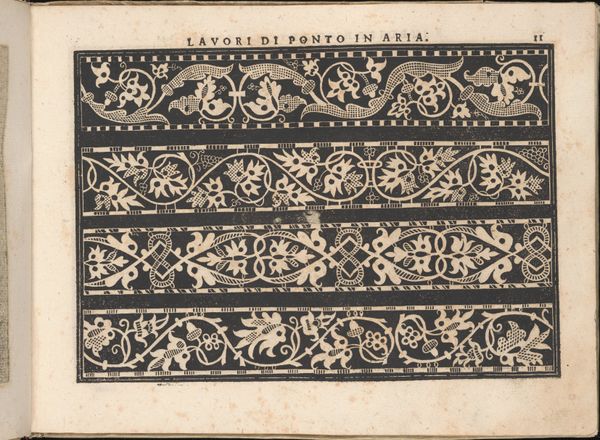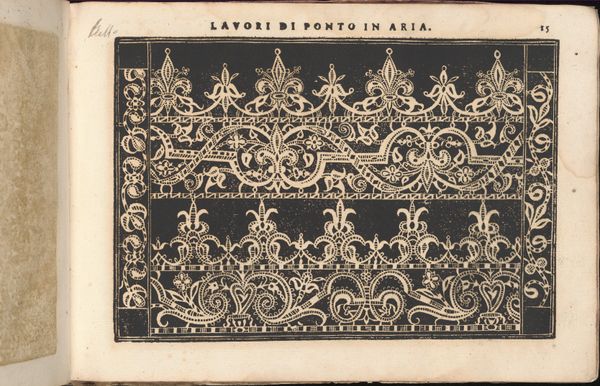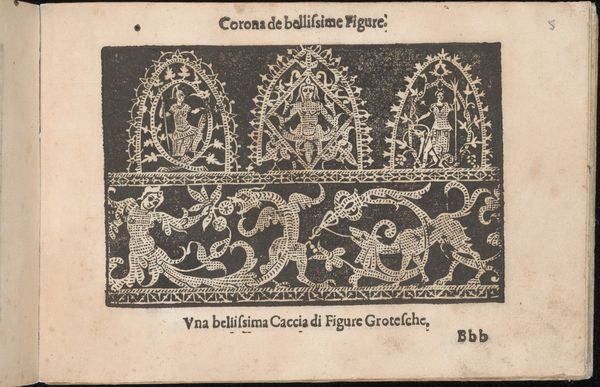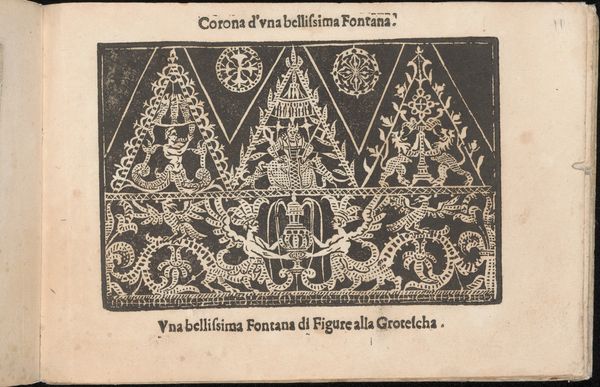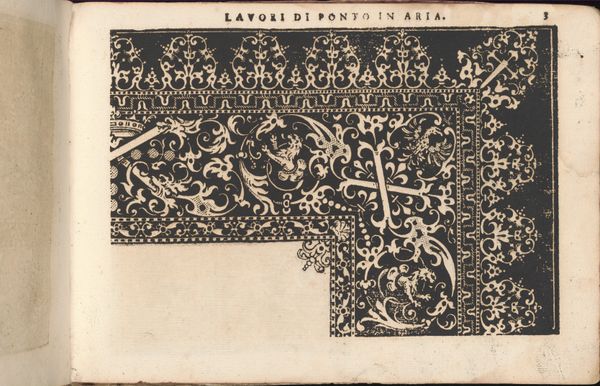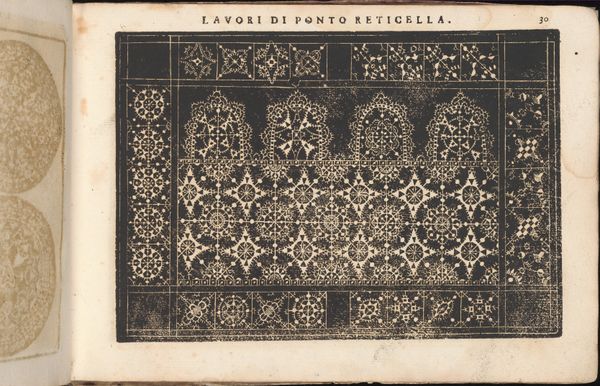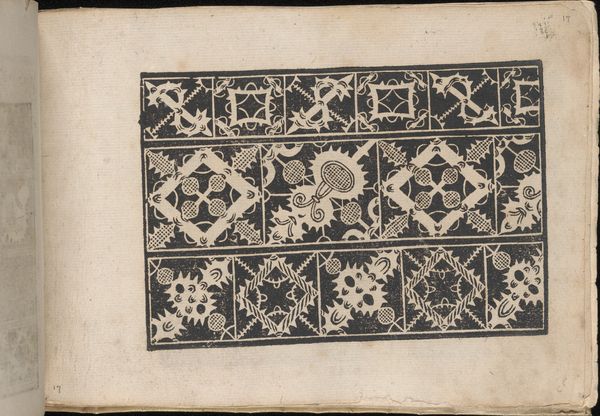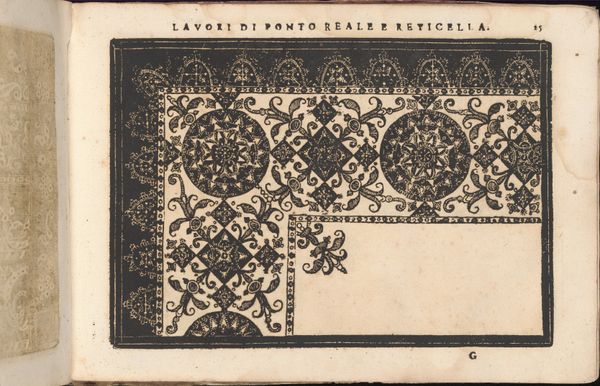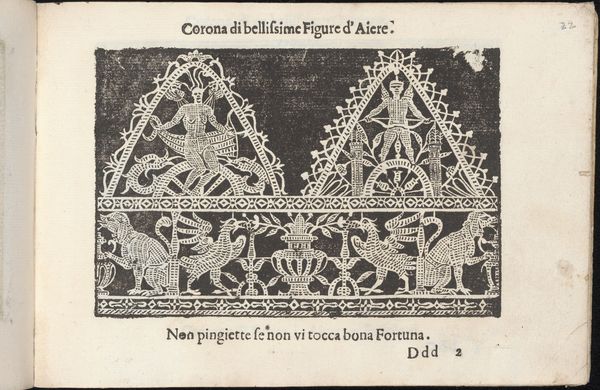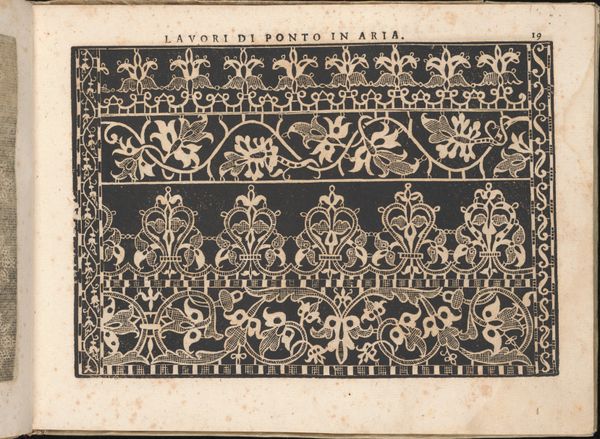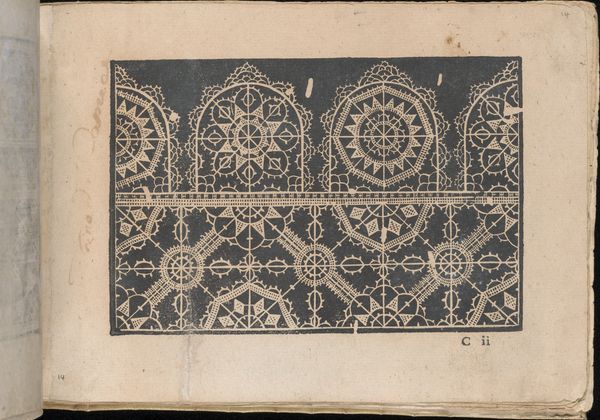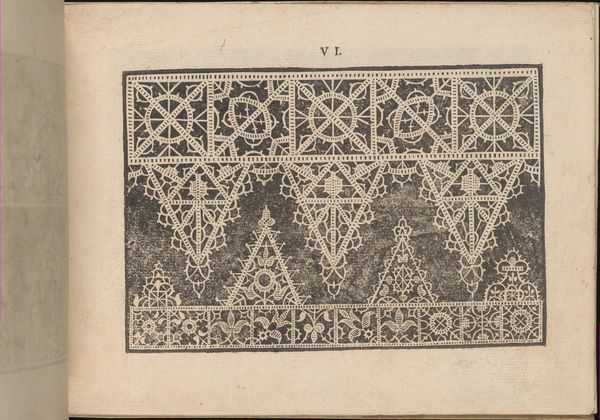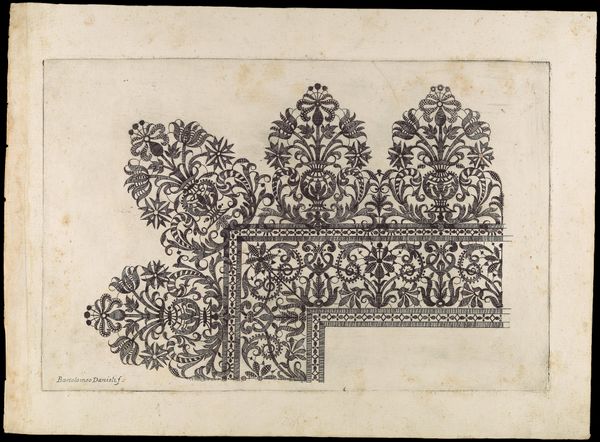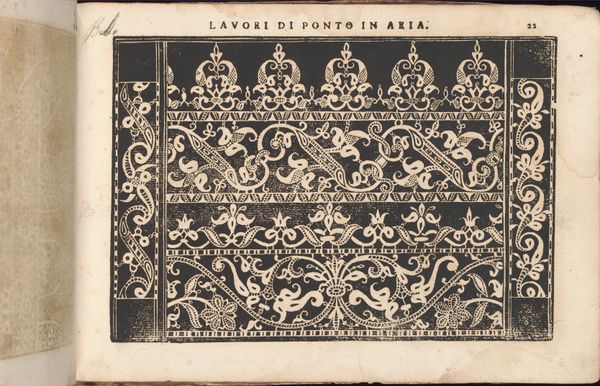
Corona delle Nobile et Virtuose Donne, Libro Terzo, page 10 (recto) 1620
drawing, graphic-art, print, engraving
drawing
graphic-art
form
geometric
line
decorative-art
italian-renaissance
engraving
Dimensions: Overall: 5 1/2 x 7 11/16 in. (14 x 19.5 cm)
Copyright: Public Domain
Editor: This is "Corona delle Nobile et Virtuose Donne, Libro Terzo, page 10 (recto)," a 1620 engraving by Cesare Vecellio. The intricate line work creates a mesmerizing pattern. How do you interpret this work? Curator: Well, looking at the means of production is key here. This wasn’t “high art” destined for a gallery wall. Engravings like this served a practical purpose. Vecellio was offering designs, templates essentially, for lacemakers. Editor: So, it’s functional art? More craft than fine art, maybe? Curator: Exactly. The emphasis shifts from the artist’s individual genius to the skilled labor of the women who would then execute these designs. It questions that separation of 'high' and 'low' art that often dominates art history. Notice the detail. Editor: Yes, I can see how time-consuming the process of creating something like that would be! What impact did readily available prints like this have on lacemaking and textile production? Curator: This image highlights how reproductive technologies changed production. Patterns became widely disseminated, influencing styles and techniques across different workshops and regions. This allowed for a kind of mass production of design, which then would influence consumption and markets. This forces us to look at who controlled these patterns, and therefore the product they helped produce. Editor: It’s like early clip art for textiles. I see the connections you're making between material, process, and social implications. Thank you! Curator: Precisely. Recognizing these connections offers an expansive understanding of the object’s creation, role, and significance beyond aesthetics.
Comments
No comments
Be the first to comment and join the conversation on the ultimate creative platform.
